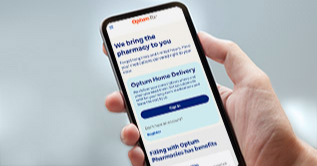Video
What is an HRA?
Watch this brief video to learn about health reimbursement arrangements (HRAs) and how they work.
An Optum HRA means smarter support for your health care spending
A health reimbursement arrangement (HRA) is a tax-free account funded by your employer to help you pay for qualified medical expenses. While the account is owned by your employer, the funds are there to support your health care needs throughout the plan year.
Additional HRA benefits include:
- Your employer contributes to the account—no money comes out of your paycheck
- Funds can be used for eligible expenses like copays, prescriptions, and dental or vision care
- You don’t pay taxes on the money used for qualified medical expenses
- Some HRAs may allow unused funds to roll over to the next year, depending on your plan
- No need to set up or manage the account—your employer handles it for you
Why members trust Optum Financial for HRA benefits
Optum Financial is a trusted leader in health reimbursement arrangements (HRAs), offering tools and support to help you make the most of your employer-funded benefits. Our solutions are designed to simplify how you pay for care and maximize the value of your health dollars.
Here’s what our account members can count on:
- Ease of use: HRAs are simple to use, with seamless access to funds for eligible expenses
- Helpful guidance: We offer education and support to help you understand and use your HRA confidently
- Smart technology: Get personalized tips and tools to manage your health care spending
- More value: Use your HRA to reduce out-of-pocket costs and stretch your health care dollars
- Lower stress: With employer-funded support, you can focus more on your health and less on the cost
Quick access to your HRA funds
Your HRA payment card is a convenient way to pay for qualified medical expenses without having to submit paper claim forms. Use it online, at the pharmacy, at the doctor’s office or write your payment card number on your provider bill.

Frequently asked questions about HRAs
The amount your employer contributes to your Health Reimbursement Arrangement (HRA) depends on the type of HRA plan they offer and their specific plan design. Employers have significant flexibility in setting contribution amounts, but some HRA types have annual limits.
For example, in 2025:
- Qualified Small Employer HRA (QSEHRA): Employers can contribute up to $6,350 per year for self-only coverage and $12,800 per year for family coverage
- Excepted Benefit HRA (EBHRA): The maximum contribution is $2,150 per year
- Individual Coverage HRA (ICHRA): There is no federal limit, and employers can set any amount they choose, as long as it complies with nondiscrimination rules
To know your exact contribution amount, check your plan documents or contact your HR or benefits administrator.
Yes, you can use a Health Reimbursement Arrangement (HRA) if you have health insurance. In fact, HRAs are designed to work alongside your health insurance plan. They help cover qualified medical expenses that your insurance doesn’t fully pay for—such as deductibles, copayments, coinsurance, and other eligible out-of-pocket costs.
Some types of HRAs, like Individual Coverage HRAs (ICHRAs), even require that you be enrolled in a qualifying health insurance plan to participate. Always check your specific plan details to understand how your HRA coordinates with your insurance coverage.
A health savings account or HSA is a tax-advantaged account that helps you pay for qualified medical expenses. Contributions to an HSA are made primarily by the employee – although employers may also contribute. Regardless, HSA funds are yours to spend forever — even if you retire, change jobs or change health plans.
The main difference between HRAs and FSAs is the funding. HRAs are funded solely by employers, while FSAs are typically funded by the employee, usually through pre-tax, payroll deductions.
Your HRA funds can be used to pay for a variety of qualified medical expenses – like doctor's co-pays, lab fees, over-the-counter medications, medical equipment, prescription drugs, eyewear, and more.
Essentially, HRAs are designed to help cover out-of-pocket healthcare costs not covered by your insurance plan.
It depends on your employer’s specific HRA plan. Some HRA plans allow unused funds to roll over from year to year, while others follow a “use-it-or-lose-it” policy. The decision to permit rollovers is entirely up to the employer.
For example, certain types of HRAs—like Individual Coverage HRAs (ICHRAs) and Qualified Small Employer HRAs (QSEHRAs)—may allow monthly or annual rollovers, but again, this is at the employer’s discretion.
To find out whether your HRA includes a rollover feature, it’s best to review your plan documents or speak with your benefits administrator.
Related resources
Health account comparison
Learn the difference between HSAs, FSAs and HRAs to find which account is best for you.
Financial wellness resources
Access a complete library of financial health information, articles and resources.
See what else we can do
Discover all the ways Optum can keep you and your finances healthy.
*Savings compares using pre-tax income in your HSA to using after tax income for purchases and assumes a 30% combined tax rate from all applicable federal, state, and FICA taxes. Results and amount will vary depending on your circumstances.
Flexible spending accounts (FSAs), dependent care assistance programs (DCAPs), health reimbursement arrangements (HRAs), Commuter and Parking Benefits, Tuition Assistance Plans, Adoption Assistance Plans, Surrogacy Assistance Plans, Wellness Benefits, and Lifestyle Accounts (collectively, “Employer-Sponsored Plans”) are administered on behalf of your plan sponsor by Optum Financial, Inc. or ConnectYourCare, LLC, and are subject to eligibility and restrictions. Employer-Sponsored Plans are not individually owned and amounts available under the Employer-Sponsored Plan are not FDIC insured.
This communication is not intended as tax or legal advice. Consult a legal or tax professional for advice on eligibility, tax treatment, and restrictions. Please contact your plan administrator with questions about enrollment or plan restrictions.





